Article No. 2: Breakthrough from piloting free trade zone
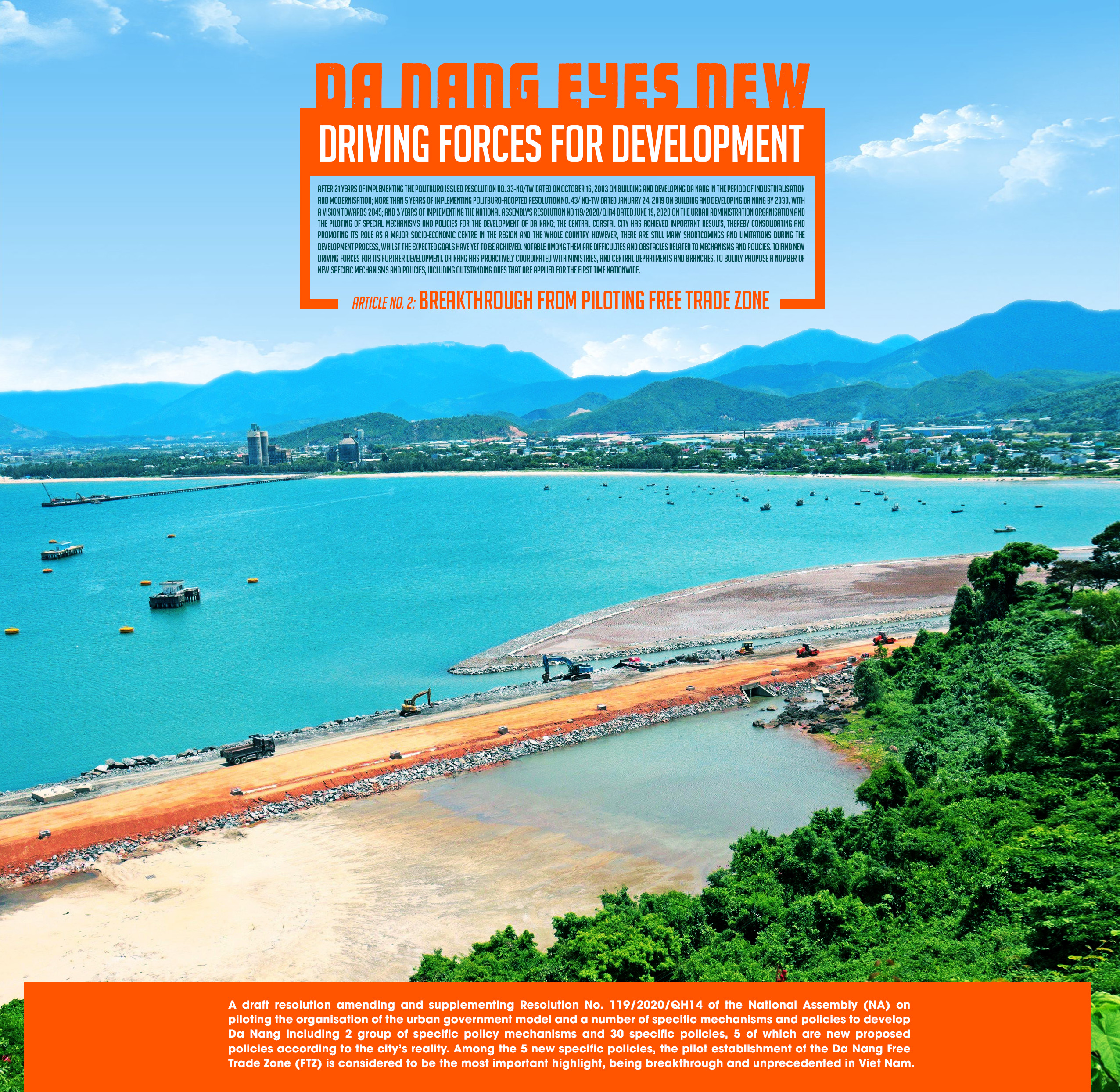 |
 |
According to the draft resolution, Da Nang has proposed to pilot the establishment of a free trade zone to pilot mechanisms and policies aimed at attracting investment from both home and abroad, especially in hi-tech industries, finance, trade, tourism and high-quality services, thereby promoting the formation of the initial institutional system for the FTZ, evaluating the pilot expansion nationwide, creating conditions for the socio-economic development of Da Nang and the North Central and Central Coast regions, while promoting Viet Nam’s economic development in the process of deep integration into the global economic system at large.
According to Director of the Da Nang Department of Planning and Investment Tran Thi Thanh Tam, the FTZ is a popular economic model that has existed in over 150 countries all over the world. Currently, countries are constantly adjusting and applying pilot breakthrough and competitive mechanisms to attract investment and promote trade and service development. In Viet Nam, the current law has no regulations regarding the establishment and operation of free trade zones.
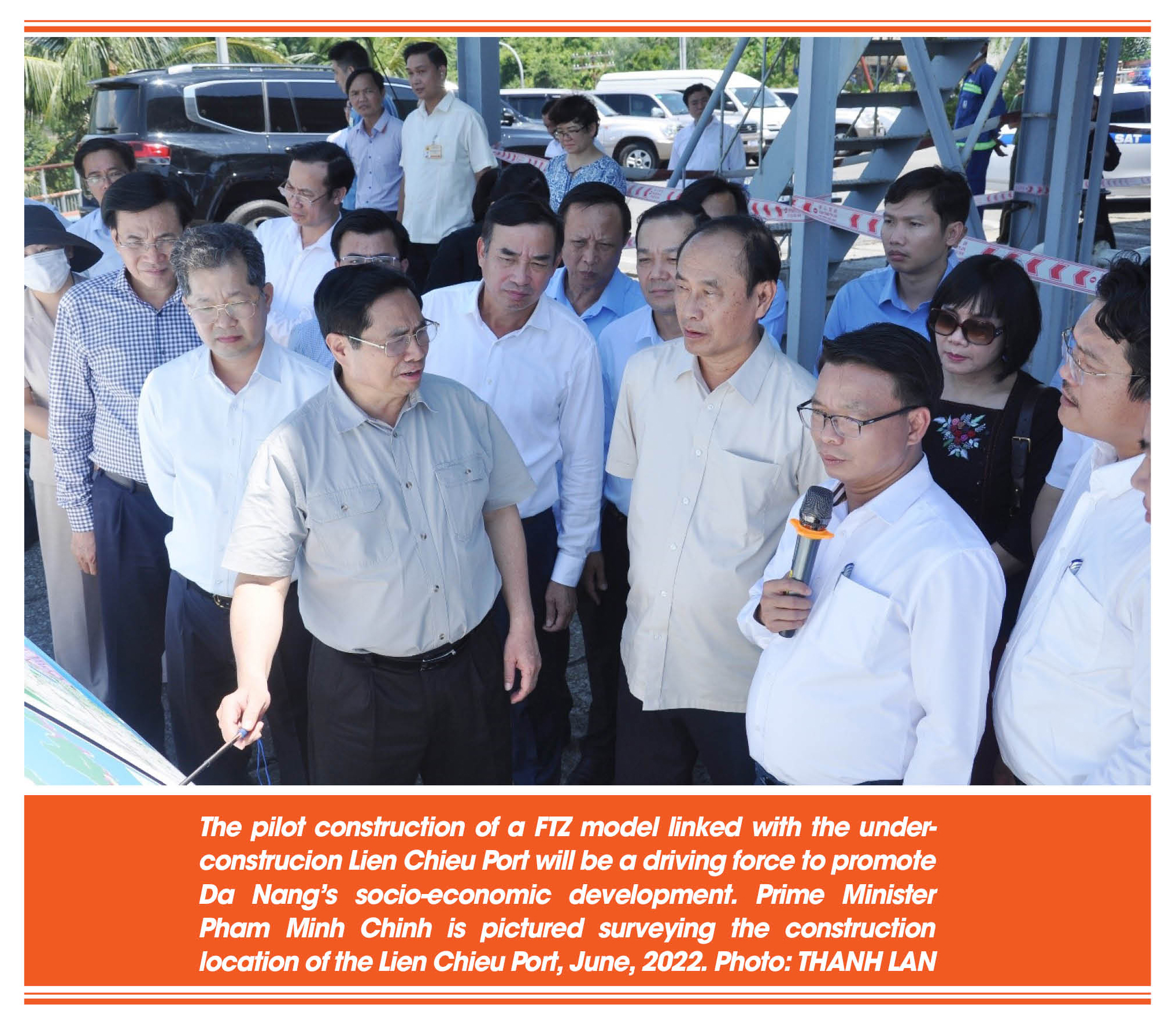 |
Da Nang has proposed to build a FTZ linked with the Lien Chieu Port to pilot policy mechanisms aimed at attracting investment, finance, trade, tourism and high quality services with the national government-approved operating mechanisms and policies that are similar to non-tariff and economic zones.
At the same time, it also proposed to pilot a number of groundbreaking new mechanisms and policies such as implementing ‘one-stop, on-site’ administrative procedures for the fields of investment, construction, labour and environment. There is a policy that allows foreign investors to set up offices in the FTZ without having to set up a project.
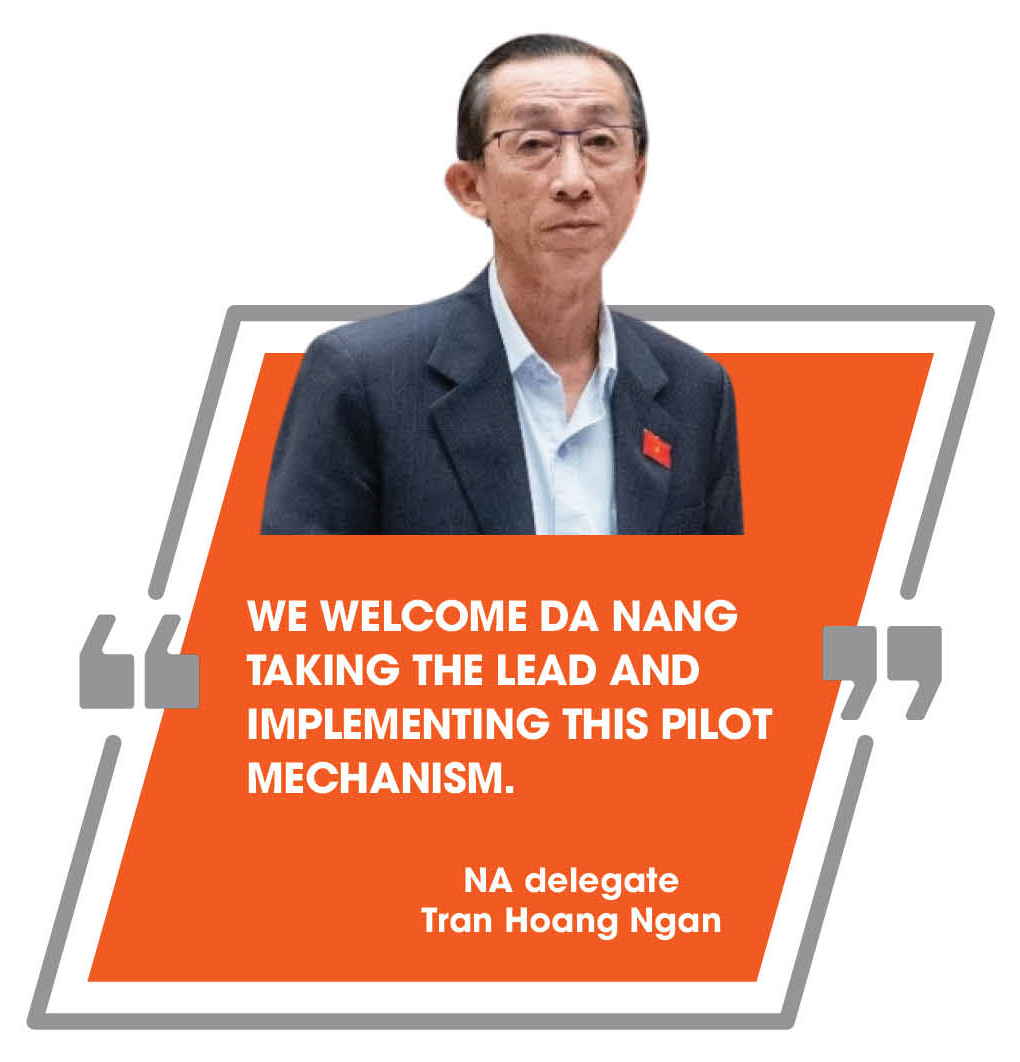 |
This is a new model, so the the national government has proposed the pilot implementation on the principle of ensuring sequentiality, step by step while doing and learning from experience.
During the implementation process, we will consider adjusting policies and proposing appropriate expansion as a premise to legislate regulations on FTZs for the whole country. “The implementation process, in addition to the city’s efforts, really requires active support from the national government and ministries to turn the the free trade zone project into a reality in Viet Nam,” Mrs. Tam expressed.
 |
Chairman of the NA’s Finance and Budget Committee Le Quang Manh, while reporting on the inspection of the draft resolution amending and supplementing Resolution No. 119/2020/QH14, said that the pilot establishment of the FTZ is a major policy with sufficient political and legal basis.
This is a breakthrough policy, political determination, and the spirit of innovation, creativity, daring to think, daring to do in applying the world's advanced development model. If implemented successfully, it will create a premise to promote socio-economic development of Da Nang and the whole region. This is also a test step for gradual improvement.
 |
At the discussion session of the 7th session of the 15th NA on June 7, many NA delegates spoke in support of the pilot establishment of the Da Nang Free Trade Zone. According to the NA e-portal, delegate Tran Hoang Ngan from the southern metropolis of Ho Chi Minh City said that this is a very successful mechanism in the world, especially for countries with advantages in seaports, such as Singapore with 9 FTZs, China with 21, the Philippines, Indonesia and Malaysia with some FTZs. Over the past 30 years, FTZs have operated very effectively and contributed to the overall development of those foreign countries.
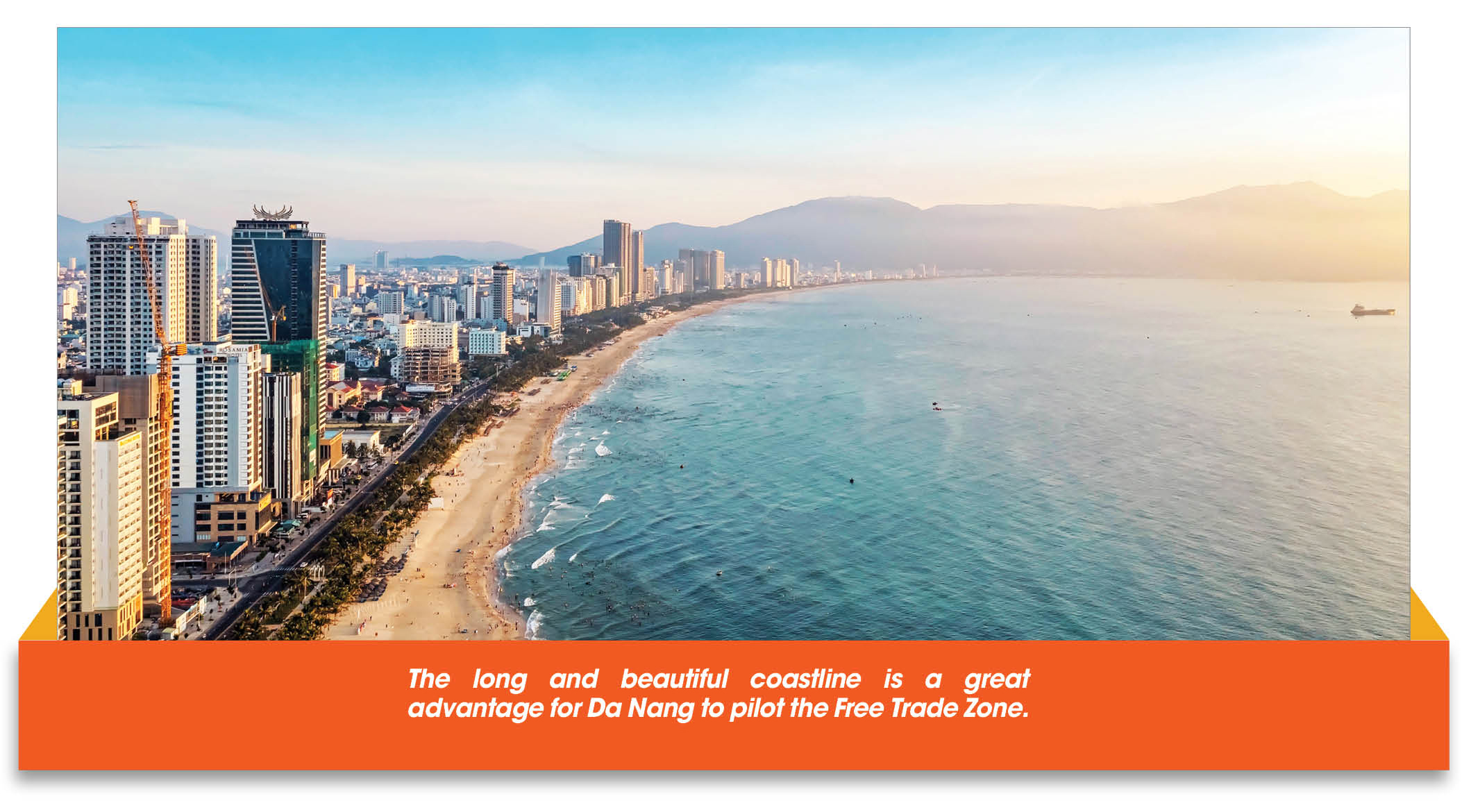 |
Pointing out a fact that Viet Nam has a very beautiful coastline of 3,260 km and has planned to have 34 international seaports, Tran Hoang Ngan realised that this is a very favourable point, so the delegate expressed his strong support for Da Nang to take the lead and implement this pilot mechanism. However, it was recommended that some additional mechanisms be added to help Da Nang successfully implement this important task. Once Da Nang successfully implements this model, it can be immediately replicated in other Vietnamese cities and localities with similar characteristics, with many ports linked to FTZs such as in Hai Phong and Ba Ria - Vung Tau, Quang Ninh, Thanh Hoa, Ha Tinh, Khanh Hoa, Binh Dinh, Quang Ngai, Can Tho, Tra Vinh and Ho Chi Minh City.
 |
Delegate Tran Quoc Quan from the Mekong Delta Province of Long An emphasised the development of the Da Nang FTZ aims to promote its role as a locomotive, leading the economic development of the northern central region, the central coastal and a basis to pilot research on new policies as a premise to legislate regulations on FTZs for Viet Nam as a whole. Highly agreeing with this policy, delegate Nguyen Huu Thong from Binh Thuan Province commented that creating a pilot application mechanism in Da Nang helps to create a new breakthrough for Da Nang in particular, and at the same time test the development of new economic model for the whole country in practice.
 |
According to Chairman of the Viet Nam Urban Development Planning Association, former Deputy Minister of Construction Tran Ngoc Chinh, with the current rate of urbanisation, Viet Nam has 904 urban areas, including 22 Class-1 urban areas, and Da Nang is now one of 5 centrally- run cities.
Da Nang has a special position because it is in the middle of the lever to carry the two ends of the country’. Compared to the 4 Class-1 centrally-run urban areas, for the time being, only Da Nang is located at the centre of the central key economic region and connected to the Central Highlands and neighbouring country Laos, so Da Nang's position is special. The existing Da Nang seaport also connects its counterparts in Viet Nam’s central region, and it is currently transferring cargo handling mission from the Tien Sa Port to the under-construction Lien Chieu Port to ensure better linkage with the national transportation system and connection with the Central Highlands region as well as Laos.
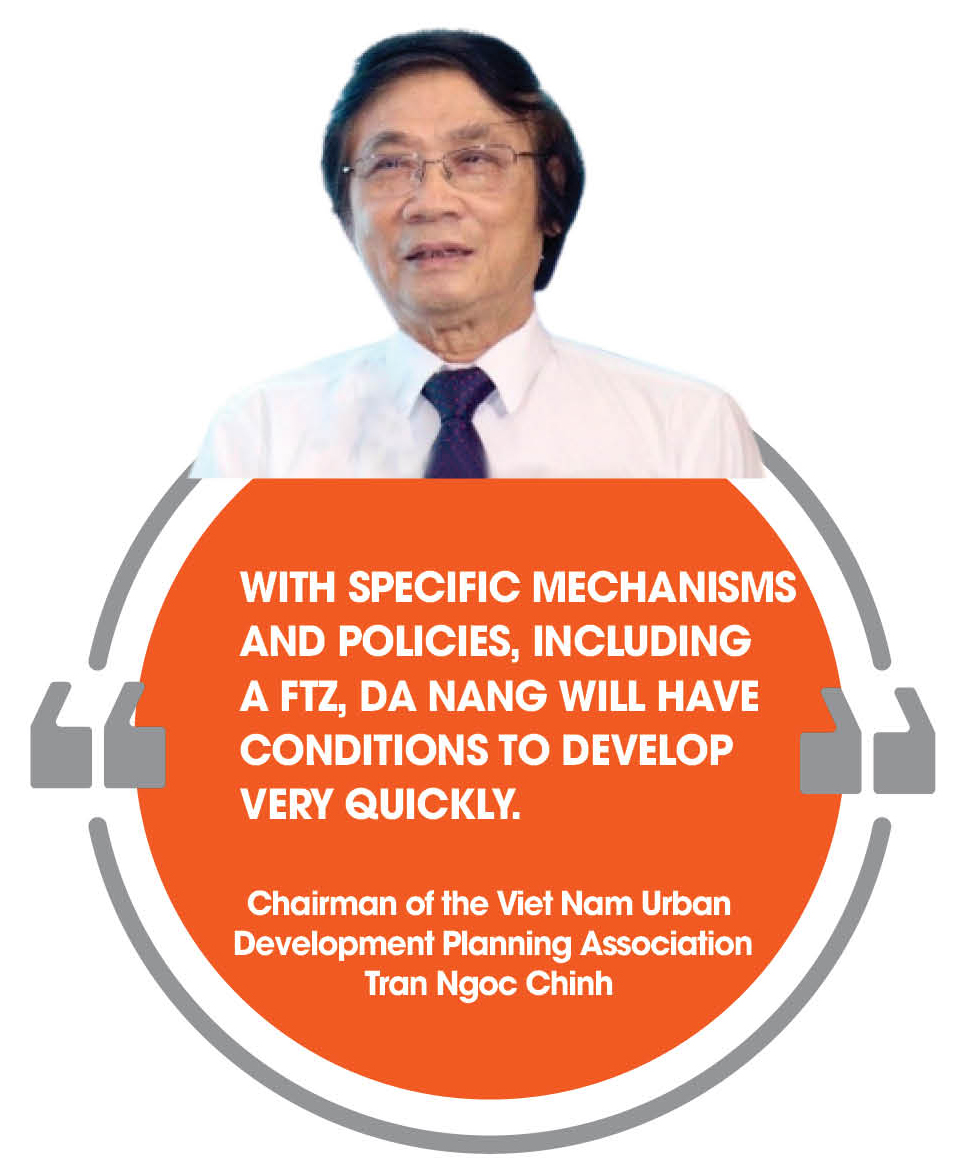 |
Viet Nam now only has export processing and technology zones. Da Nang will be the first Vietnamese locality to implement the FTZ model on a pilot basis because the national government has seen the development potential of Da Nang and its connection with the sea, islands, regions and the whole country.
The FTZ is related to the fields of logistics, services, trade, finance, along with the system of seaports, airway and railway. “Da Nang has all fields and systems available to build a FTZ. With specific mechanisms and policies, including a FTZ, Da Nang will have conditions to develop very quickly”, Mr. Tran Ngoc Chinh expressed.
 |
According to Ph.D Cao Tri Dung, the Chairman of the Da Nang Tourism Association, piloting the investment mechanism to build a FTZ will help Da Nang have a great advantage in attracting high-end tourists, both for sightseeing and enjoying entertainment and shopping services. In particular, thanks to great tax incentives, mechanisms and policies, Da Nang’s competitiveness level will increase, attracting major brands in the world.
The specific mechanism will open up many business opportunities for tourism services from accommodation, relaxation and entertainment as well as increase the value of real estate associated with resort tourism in Da Nang. The city will therefrom attract more resources from investors, businesses and high-quality human resources everywhere.
 |
Specific mechanisms and policies will also create a favourable legal corridor, opening up new resources for investors to effectively exploit resources. To do the above-mentioned tasks, the city needs to attract strategic investors with rich potential, experience, deep expertise, and understanding of the market, forming a product ecosystem, identifying potential markets to deploy advertising and promotion activities.
Such synchronous implementation can call for investors with strengths in capital, technology and expertise to join forces with the city’s administration, mobilise the total strength of the community, thereby promoting the effectiveness of specific mechanisms and policies, contributing to realising the development plans and orientations.
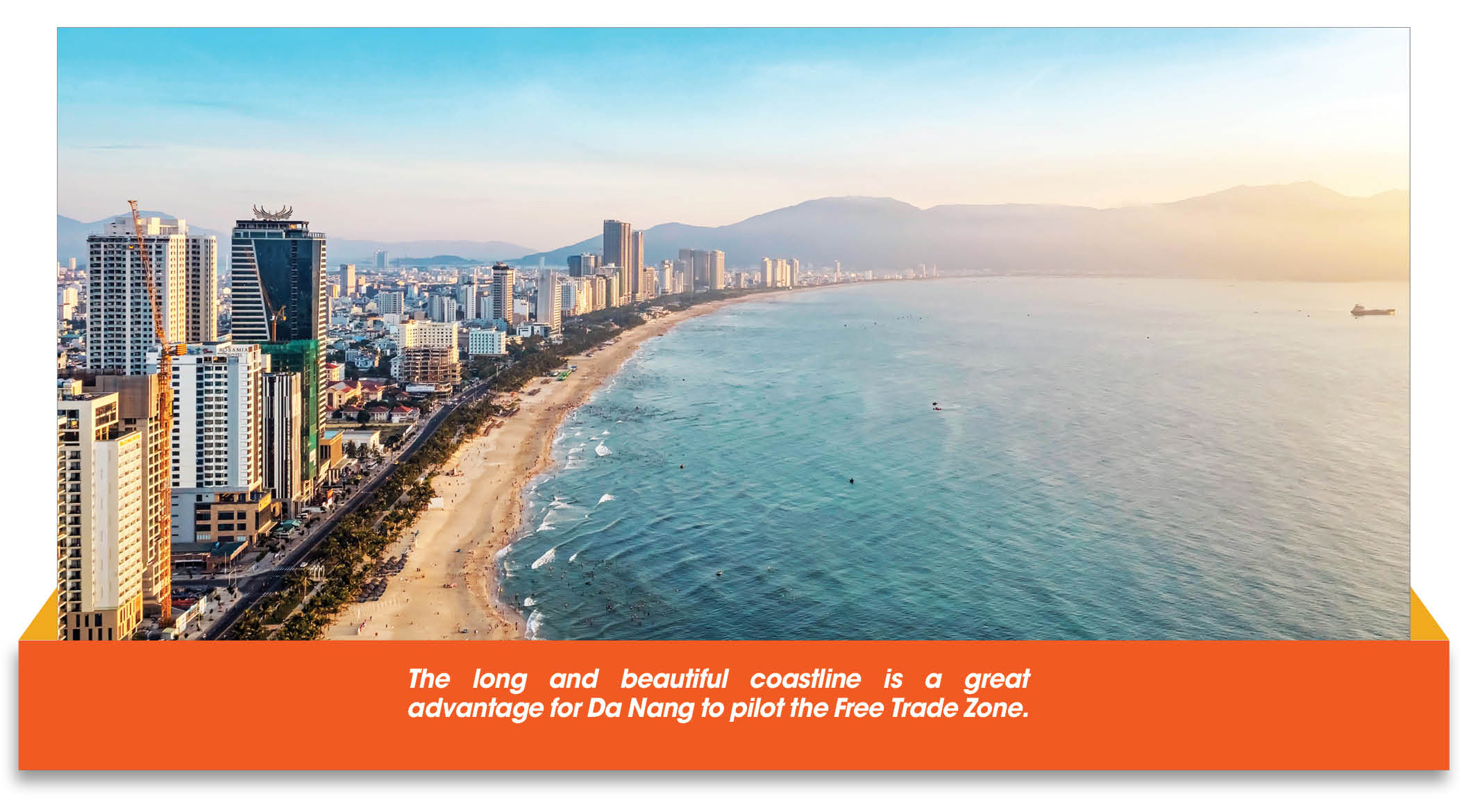 |
D.Sc Ngo Viet Nam Son said that the NA’s consideration of passing a resolution to amend and supplement Resolution 119/2020/QH14, including the pilot establishment of a FTZ, is a new development driving force for Da Nang towards sustainable development. “With the characteristics of Da Nang as well as the central region's narrow and long terrain, perhaps the city should follow the model that is being applied in Singapore or Hong Kong (China). The pilot establishment of the FTZ should be linked with the development of the Da Nang International Airport and Lien Chieu Port,” Mr. Son said.
At a recent conference ‘FTZ: New driving force for economic development in Viet Nam’s central region’ organised by the Central Viet Nam - Central Highlands regional branch of the Viet Nam Chamber of Commerce and Industry (VCCI), in coordination with the CT Strategies Vietnam Co., Ltd., many delegates commented that Da Nang possessed an advantage to pilot a FTZ. As assessed by Ms. Ngo Quynh Hoa, the Deputy Director of the Da Nang Department of Legal Education and Popularization under the Vietnamese Ministry of Justice, Da Nang can refer to FTZ models in Southeast Asia such as Singapore and Malaysia. Accordingly, it is necessary to form synchronous institutions and policies for the FTZ to operate most effectively, concretise investment incentive policies on corporate income tax, land rent exemption and reduction, and other incentives.
In parallel with it, it is need to enhance the quality of human resources for the FTZ. Once approved by the NA, Da Nang needs to soon develop a pilot policy and legal framework on the FTZ. In particular, the city must compile the detailed regulations on conditions to ensure the operation of the FTZ, proactively review legal documents related to foreign investors and continue to increase legal support for businesses
.
 |
Reporting by THAO NHI, HOANG HIEP, MAI QUE, THU HA
Translating by A.THU
Designing by LE THANH